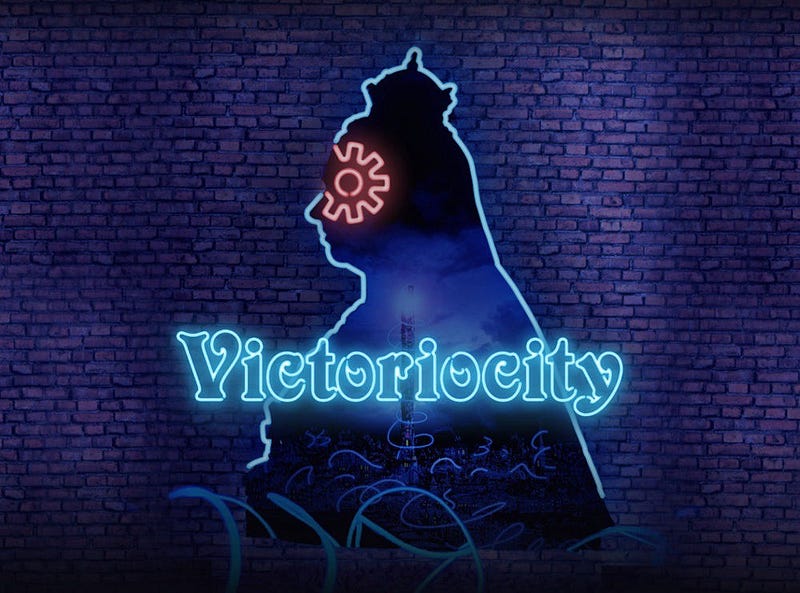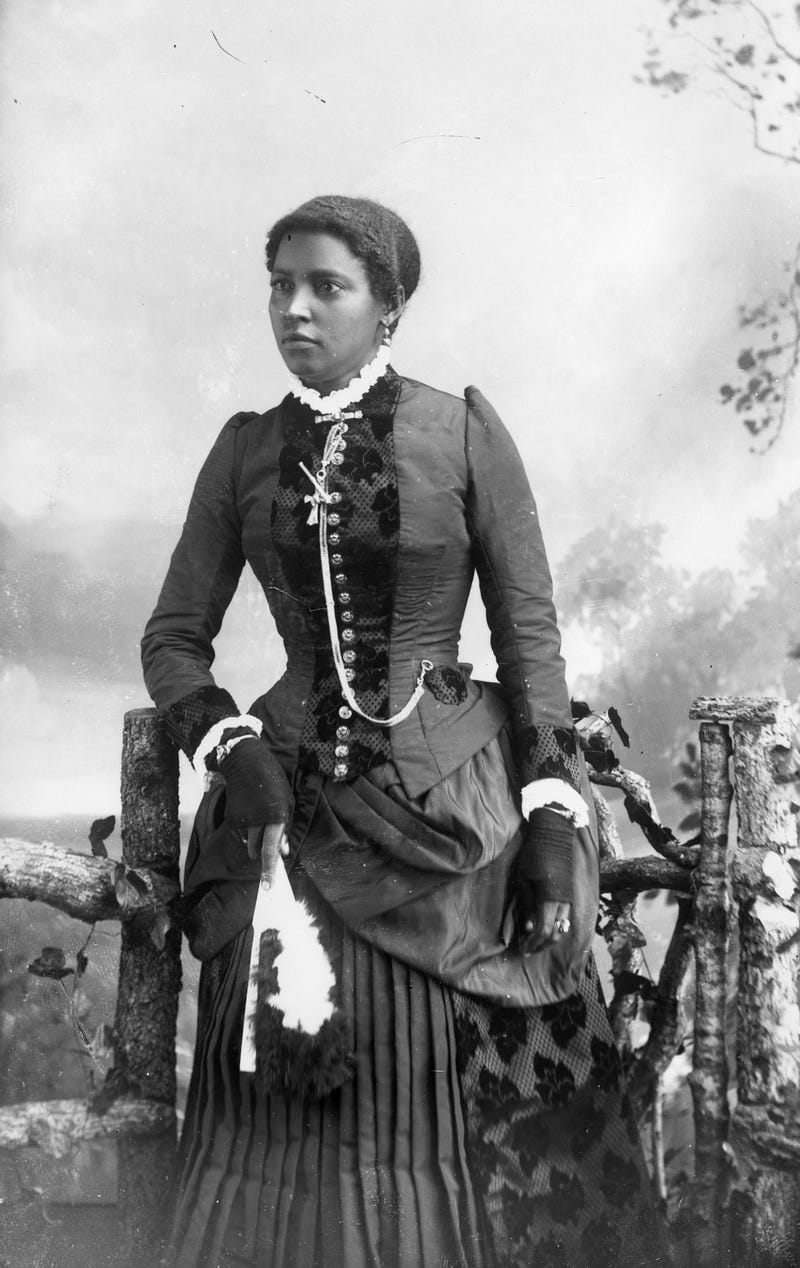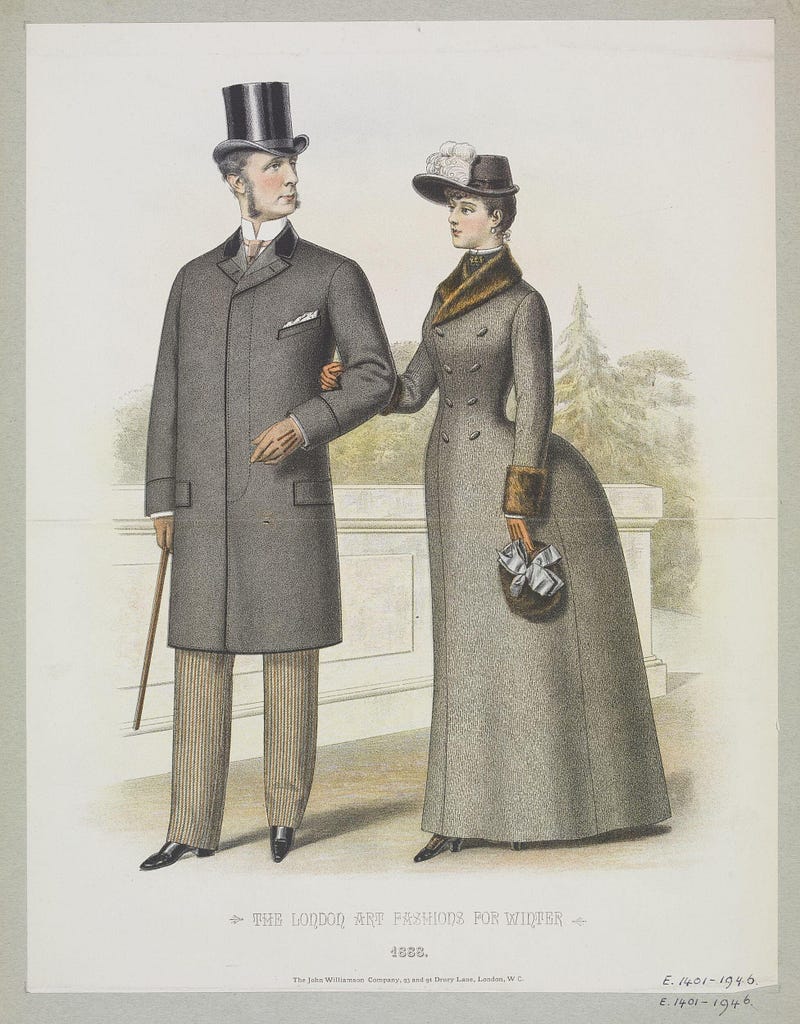
This article is also available on my Medium.
There are many novel ideas ‒ in this instance referring to literal literary texts rather than qualitative assessments of originality ‒ that become audio fiction. For example, the writer Lorin Clarke intended for the Australian audio drama The Fitzroy Diaries to be a novel as well as a podcast. The reasoning behind the change of medium is sound: the route of self-publishing being so fraught and traditional publishing being difficult to access, writers wanting to share the work with the world are drawn to a medium where the barrier to entry is much lower. Fewer audio fiction, however, follows the reverse route and becomes a novel.
Shifting mediums from podcast to paper is also not without merit. The publisher, seeing the listener numbers of the podcast, may be more willing to risk resources on a story that already has an audience behind it. The author, meanwhile, has their work reach a broader audience. The audience, if already familiar with the concept of audio drama, has a physical item that they can own and handle and throw across the room should the urge overtake them without worrying that the RSS feed may someday disappear, and if not familiar with the concept, may well have their eyes ‒ or rather ears ‒ opened to an entirely new medium.
The most famous instance of such a medium shift occurred during the days of the audio drama’s predecessor, the radio play. In 1978, the British Broadcasting Corporation Channel 4 aired the science fiction comedy programme The Hitchhiker’s Guide to the Galaxy. After the show’s success, the writer Douglas Adams novelised the Primary Phase and the resulting book trilogy of more than three parts became a household name.
More recent instances include the Welcome to Night Vale Novels by Joseph Fink and Jeffrey Cranor, Lauren Shippen’s Bright Sessions Novels and Clint, Griffin and Travis McElroy and Carey Pietsch’s The Adventure Zone graphic novels. The most recent instance occurred only this March, when from the minds of the writer duo Chris and Jen Sugden came both the third season, ‘Truth and Claw’, of Victoriocity and the novel High Vaultage.

To imagine the world of Victoriocity is to imagine Victorian society in 1887, if three history-altering events had taken place:
- Presumably during a parade around Hyde Park in 1840, a man shot the young Queen Victoria and killed her. Buckingham Palace averted an ensuing succession crisis, however, by assembling a team of medical engineers that miraculously returned the monarch from the land of the dead. Queen Victoria would then go on not to survive her following ten assassinations, but to be revived during the subsequent national mourning period with more and more mechanical components that eventually outnumbered those of flesh and blood. These endowed her with remarkable grip strength, stilts should she draw herself up to her full height, a non-zero amount of bladed body parts and the ability, in 1861, to absorb in herself the dying consciousness of her husband Prince Albert.
- Around the 1850s, the scientist Dr. Mikhail Salik designed the Tower, a mile high, that beams electricity out across the vast city. This endeavour, brought to life by the engineer Isembard Kingdom Brunel and funded by the sale of the crown jewels, yielded immediate and astounding results. Whilst it may have resulted in regular danger of electrocution and the permanent freeze of the River Thames (now Thames Glacier), it also came with the upsides ‒ or perhaps, given their ceaselessness, downsides ‒ of powering and inspiring other technological advancement in the city, such as electric trains, automatons, photovoltaic omnibusses, locution glasses (a kind of videoconferencing device) and any number of contraptions a Victorian society might find use for.
- Inspired by his success with the Tower, Isembard Kingdom Brunel realised the possibilities of construction were limitless, and immediately set about on other projects redesigning the landscape with vigour and disregard for planning permission. These included London Central North train station, the Westminster Fortress and the forty-mile long Carstol docklands built over the waters that once separated the cities of Bristol and Cardiff. Each endeavour brought with it the need for more workers, and the workforce grew so large it needed divisions, all of whom were unquestioningly loyal to Brunel, acting autonomously and without the foresight to know what would happen to Cambridge. Whilst Brunel disappeared from the public view, his Brunelians carried on their work, and the landscape was transformed into a vast expanse of city and architecture so mind-boggling any glance out of a window with a good view came with the risk of the need for an unplanned extended stay at the Didcot National Insanitorium.
Whilst these events are mysteries on their own, they are enmeshed in even more mysteries like the parcel in the popular children’s birthday party game. The first season is an investigation wrapped up in the aforementioned second event on the city; the second, the first; and for the third event, pick up your copy of High Vaultage at your local bookstore or library.

Called upon to solve these cases are two investigators. Detective Inspector Archibald Fleet (Tom Crowley) may be the most unfortunate man in Even Greater London owing not only to his entanglement in the most dangeorus intrigues of the city, but also because of him being the only person ever to try and understand them. The eager Clara Entwhistle (Layla Katib), the daughter of an aristocratic Yorkshire family who throws off her life of high society to become a journalist for The Morning Chronicler, arrives in London and is immediately embroiled in the machinations of the city. Their paths cross at a high-profile murder and they soon discover, to Fleet’s dismay and Clara’s satisfaction, how effectively they work together.
CLARA:
We haven’t agreed our plan!FLEET:
What do you mean ‘our’?CLARA:
First person plural possessive.FLEET:
That’s clearly not what I meant.
Both are straightforward, tenacious and compassionate people, but while Fleet’s years in the city have left him with his guard permanently up, Clara is always open to new experiences. They balance each other out, slipping into an easy back-and-forth as they put together the pieces of their cases.
CLARA:
Well, he can’t have made it to the other side of the river yet, and I don’t see anyone sliding about coatless like a loon. He must be hiding in one of these tents. Let’s flush him out!FLEET:
But which one?CLARA:
Let’s see. ‘Agwith’s. Even Greater London’s Finest Hot Wine’. ‘Peritot. Even Greater London’s Finest Soups’. ‘Lemarque. Even Greater London’s Finest, Freshest, Warmest Bread.’ Oh, bread!FLEET:
You think he’s in there?CLARA:
Probably. It sounds wonderful!FLEET:
You think he’s gone in whichever shop sounded most delicious?CLARA:
People do strange things when they’re hungry. I know I do. Plus, it never hurts to have some bread, just in case.FLEET:
In case of what?CLARA:
Who knows? Starvation. Trade. That bit of soup at the bottom of the bowl that the spoon can’t get.FLEET:
You think he’s gone in there to prepare for those eventualities?CLARA:
No, but I think we should. To start with, it says it’s London’s finest.FLEET:
You know it’s not really London’s finest, they just say that to make you want it.CLARA:
But what if it is? I mean some bread has to be the finest so why not this one?FLEET:
Apprehension first, then bread.CLARA:
Fine. In which case he’s in there.FLEET:
Where?CLARA:
‘Dudger’s Adequate Food.’ That’s the least appealing thing here. No-one has gone in or out since we’ve arrived, and all the other stalls are packed!

The first and second season of Victoriocity take place over the course of one harrowing week in January 1887, and are followed by the supporter-only special episode ‘Murder in the Pharaoh’s Tomb’. High Vaultage takes place two months later, and the third season, Truth and Claw, sometime after that, soon to be followed by another supporter-only special episode, ‘H.M.S. Kellerfore’, which promises to be inspired by the works of Gilbert and Sullivan.
The potential promise of a musical episode speaks to the benefits of the audio medium: you cannot enjoy a scene at an inn where fishers sing of how a lack of self-care led to their imagining omens on the ocean, complete with Clara singing a refrain and Fleet reluctantly giving into the expectant prompting at the end to belt out the final note, in text form. Neither can you have the gag of ‒ ‘That man is a fraud!’ ‒ ‘My footman?!’ ‒ ‘No, sorry, the man behind him.’ ‒ in a medium with visual cues, be they descriptive or performed, or Tom Crowley as Fleet trying not to eat Clara’s hair when she uses him to give herself a height advantage whilst spying. Nor, indeed, is it legally feasible to have the crossover and cameo fun of the ever-expanding podcast extended universe in literary form.
That being said, a book certainly has its own merits. Description, for example. Whilst Victoriocity has a Narrator, no doubt easing the transition into book form, most of the exposition is to flesh out the world and not to describe a character’s appearance or inner thoughts. Through High Vaultage, audiences may for the first time have a more complete image of how Fleet and Clara look and dress than can be gleaned from the publicly available podcast feed, and know their inner thoughts directly.
Fleet didn’t hear this. He was completely absent from the room, listening to the ticking in his chest, which only he could hear. He had a vague sensation of lying on a table, unable to move or speak. Voices in the distance were describing the appalling condition of his body and how many of his organs they would need to replace with mechanical alternatives.
The fascinating question, when adapting a story from one medium to another, is what will be adapted. When it comes to the movie adaptation of a book, the plot is typically condensed into its most necessary parts and characters and scenes considered superfluous are removed. Characterisation may change, of course, as might endings. In a television adaptation, the opposite occurs: a plot is fleshed out, scenes and characters are added. In either case, the adaptation tells the story anew.
When it comes to the adaptations of audio fiction, for example, this seems to have been the approach for the now-cancelled Netflix adaptation of Sarah Rhea Warner’s audio drama podcast Girl in Space. Fink and Cranor’s novels, meanwhile, are told in the same universe of the podcast but focus on different stories than the main show and often choose different characters from the show for their leads. Shippen, similarly, tells her Bright Sessions Novels from the perspectives of characters who are familiar to the audience, but not the titular lead Dr. Joan Bright from the main show. In that vein, A Neon Darkness is a prequel to the show, providing backstory to the antagonist Damien. The Infinite Noise, meanwhile, retells main character Caleb and Adam’s story from their perspective, rather than acted out in recordings.

By all accounts, High Vaultage seems like just another Victoriocity story, another mystery for the Fleet-Clara detective duo to solve. There are certain aspects, however, that put that idea into question. The first is a scene at the beginning of the story, when Fleet and Clara are hired to interrogate a would-be bank robber.
‘Inspector Fleet?’ asked the gentleman.
‘Yes,’ Fleet replied from the doorway. ‘Who are you?’
‘Of Honiton Street?’
‘Yes. Who are you?’
‘Formerly of Scotland Yard?’
‘On accidental sabbatical from Scotland Yard, yes. I’m a Sagittarius as well if that helps move this along.’
Compare this with a scene at the end of the third episode of the third season, entitled ‘The Boundary Forest’:
CLARA:
There’s Cassiopeia, you see? A sort of W.FLEET:
Oh, yes.CLARA:
And below that, there’s Perseus. And Taurus.FLEET:
Taurus! That’s my horos— (clears throat)CLARA:
(gasps) You’re a Taurus!FLEET:
Maybe. Maybe I’m lying. It’s not my birthday, after all.
Is Fleet lying, either to the bank owners or to Clara? Is he unwilling to give away his personal information to the bank owners, or trying to mislead Clara in a long-running joke? If the events of High Vaultage take place before Truth and Claw, why doesn’t she remember him saying he was a Sagittarius before? Or, more likely, was this one of the three known print errors in a well-edited book?
But there are also similarities which put the idea of High Vaultage as another Victoriocity story that can be seamlessly slotted into the wider tale into question. Take, for example, the following line, which may become A Tale of Two Peters ‒ specifically, Peter Rae, who provides the Narration of Victoriocity, and Peter Wicks, voice of Balmoral of the fan-favourite Sandringham and Balmoral double act in the second season of Victoriocity and the narrator of the audiobook of High Vaultage ‒ and whose version of the line listeners will prefer more:
‘Even Greater London, to use its proper title, which nobody ever did. An uninterrupted urban plane encompassing the entire lower half of England, and for complex reasons, only the upper third of the Isle of Wight.’
Clearly, the Sugdens chose to reuse some of their strongest material from the show for the novel. Beyond the obvious fact that an author doesn’t assume that their audience is familiar with their work when telling a new story, this indicates that a new audience was prioritised over the already-established one. New readers are hooked in, hopefully leading them to discover Victoriocity and new audio fiction as a whole. The existing audience, meanwhile, is treated to a new story in the world they love.
The decision has played out well. High Vaultage has already hit №5 on The Sunday Times Bestsellers List, a remarkable achievement for any book, let alone one in its first week of publication. This is not just a testament to the dedication of audio fiction audiences, but to the Sugdens’ expert writing and the excellently eccentric world they have constructed.
It is truly a delight for the Sugdens’ work to be noticed beyond their dedicated listeners and BBC aficionados, as High Vaultage is at the same stratospheric standard of their usual work. Robin Howell writes on Sky Full of Pods: ‘The satire is even more smart, the wit even more sharp, and Even Greater London is even more incomprehensible, terrifying, and absolutely fascinating than before.’ Comparisons have been made to Terry Pratchett, to Ben Aaronovitch, to Charles Dickens, to that audio fiction legend Douglas Adams. It is an absurd London Funderground ride of a story that will leave readers on the edge of their seats, so it is advisable to ensure one is properly secured lest one falls off.
Listen to the trailer below. You can listen to Victoriocity via the show’s website or your podcatcher of choice. Get your copy of High Vaultage from your local bookstore or library, or ask them to order it if they don’t have it in stock.

Leave a Reply